Search
Did you mean: Epona?
Search Results

Image
Stone Weight from Sippar
The inscription, unusually for a weight, is cut in reverse. It mentions that this stone weight was dedicated to the temple of Shamash, the sun god, at Sippar. It precisely gives the weight as 10 mina, 15 shekels, a little more than 5 kilograms...
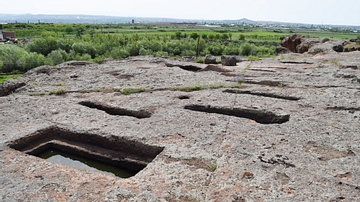
Image
Stone Carved Indentations at Agarak
These indentations in stone found at the Agarak archaeological site were likely used for rituals involving wine and "holy water." They come in a variety of sizes and shapes. The ancients of Agarak believed these rites involving the use of...
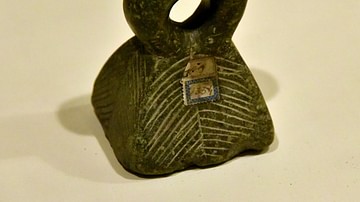
Image
Stone Seal from Gordion
Stone Seal from Gordion (Gordium), the capital city of ancient Phrygia, in modern-day Turkey. First half of the 1st century BCE. (Museum of Archaeology, Istanbul, Turkey).
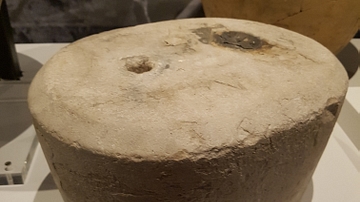
Image
Stone Weight From The Comacchio Shipwreck
A Centussis weight used to weigh the cargo for sale. The stone is inscribed with an 'M' for Magister Navis, the ship's master and the initials 'TRVF', possibly for his name - either Titus Rufius or Titus Rufrenius. The two holes on the upper...
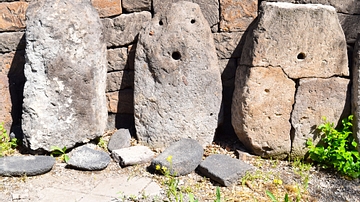
Image
Stone Tools at Shengavit Settlement
Stone tools and other archaeological remains from Shengavit, dating from c. 3500-2200 BCE. This settlement is an archaeological site located in Yerevan and is one of Armenia's most important Bronze Age sites.
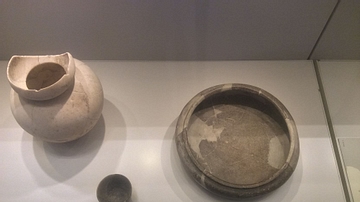
Image
Stone Vessels from Tel Kabri
Some of the stone vessels found at Tel Kabri in 1956. These vessels are from the Wadi Rabah material culture which inhabited Tel Kabri and the surrounding area from 4500–3500 BCE. These objects are now on display in the Israel Museum.
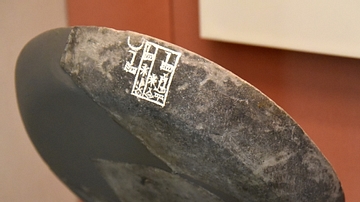
Image
Stone Plate of Enmahgalanna from Ur
This is a polished grey stone, which was probably an offering stand. The name (and title) of "Enmahgalanna" appears and is repeated unusually with a pictogram of the moon's crescent (instead of using the pertinent cuneiform sign). Enmahgalanna...
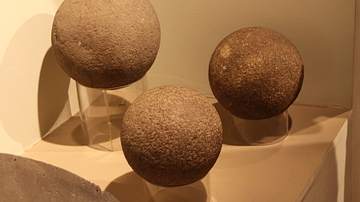
Image
Stone Spheres
Stone Spheres, Jade Museum, San Jose, Costa Rica.
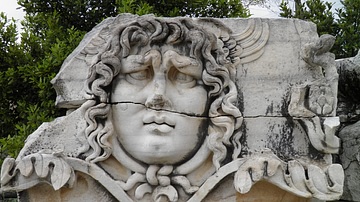
Image
Stone-carved Medusa head from the temple of Apollo at Didyma
This giant Medusa head was formerly part of a frieze on the architrave of the Apollo Temple at Didyma (Turkey).

Image
Stone Mould from Nineveh
This mould was used to make small and cheap metal amulets. One is an image of demonic Lamashtu, to keep her away from women and their new-borne infants. From Nineveh, Northern Mesopotamia, Iraq. Neo-Assyrian Period, 800-612 BCE. (The British...